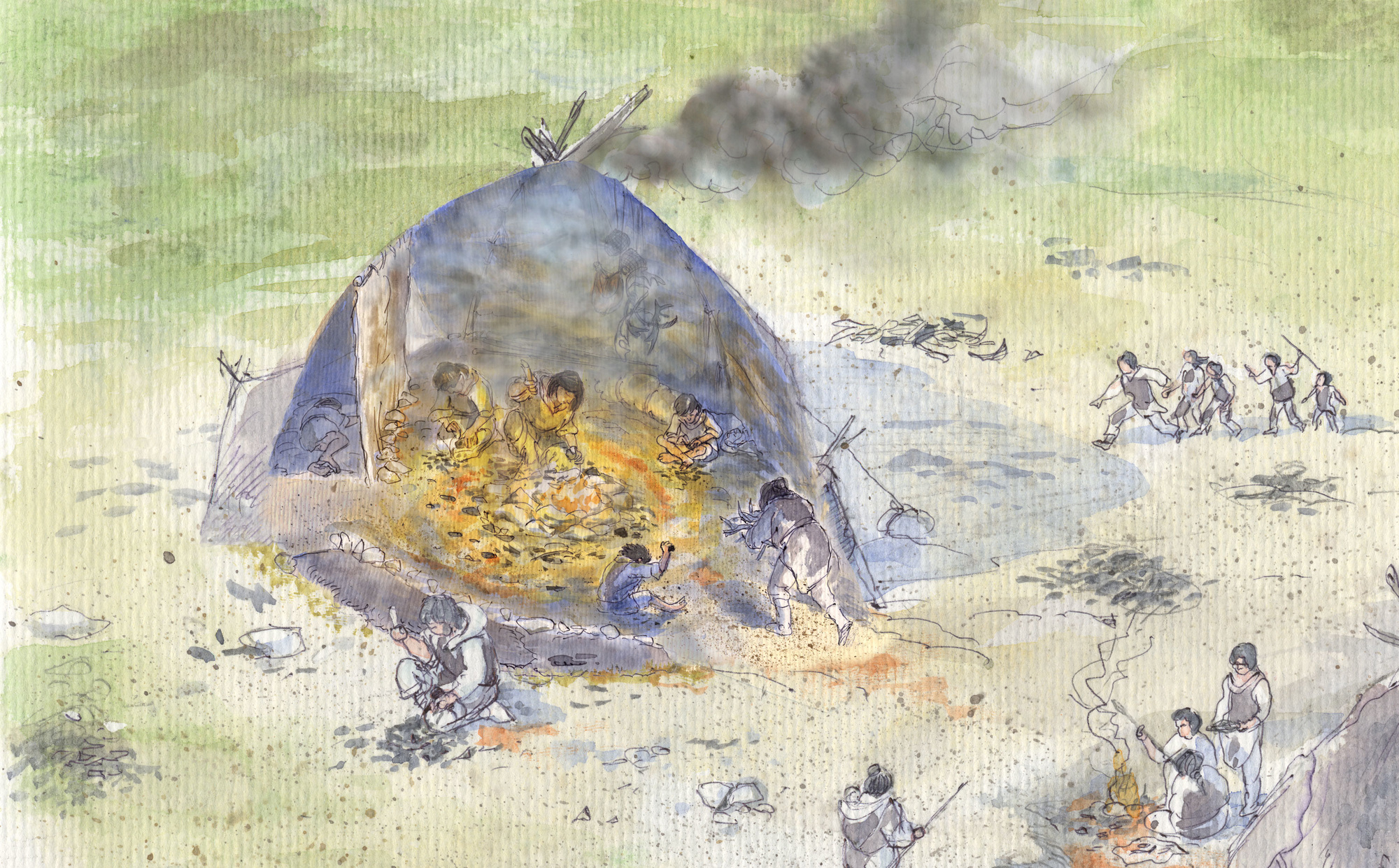
- Home
- The Magdalenians in their camps
- Norms and technological variation
- Mastery of traditional techniques
The use of knapping to produce blades was common to all cultures of the Upper Palaeolithic, but the Magdalenian knappers stand out for the remarkable quality of their work.
The production of long, and very long, blades
In the camps we regularly find blades which are 20 to 30 cm long, sometimes more. Large quantities of long blades were produced from large tablets of flint. These faultless flint products were difficult to make, requiring great technical skill and much practice.
More ordinary flint knapping
Alongside these high quality flint products were more ordinary blades, requiring less care and maybe less knowledge. These products were easier to make and came from smaller flint tablets, maybe even from reusing cores used for the first phase of knapping to produce long blades. These items were also useful for making tools.
Flint knapping in several steps
Laminar knapping requires several steps. Before detaching any blades, the core must be shaped. This preparatory phase can be more or less complex depending on the original form of the flint. The preparation of the core and the knapping of the blades were often carried out in two different areas in the camps. The preparation generated a lot of waste, so would usually take place outside habitations, outside the camp or sometimes even on the deposit itself.

